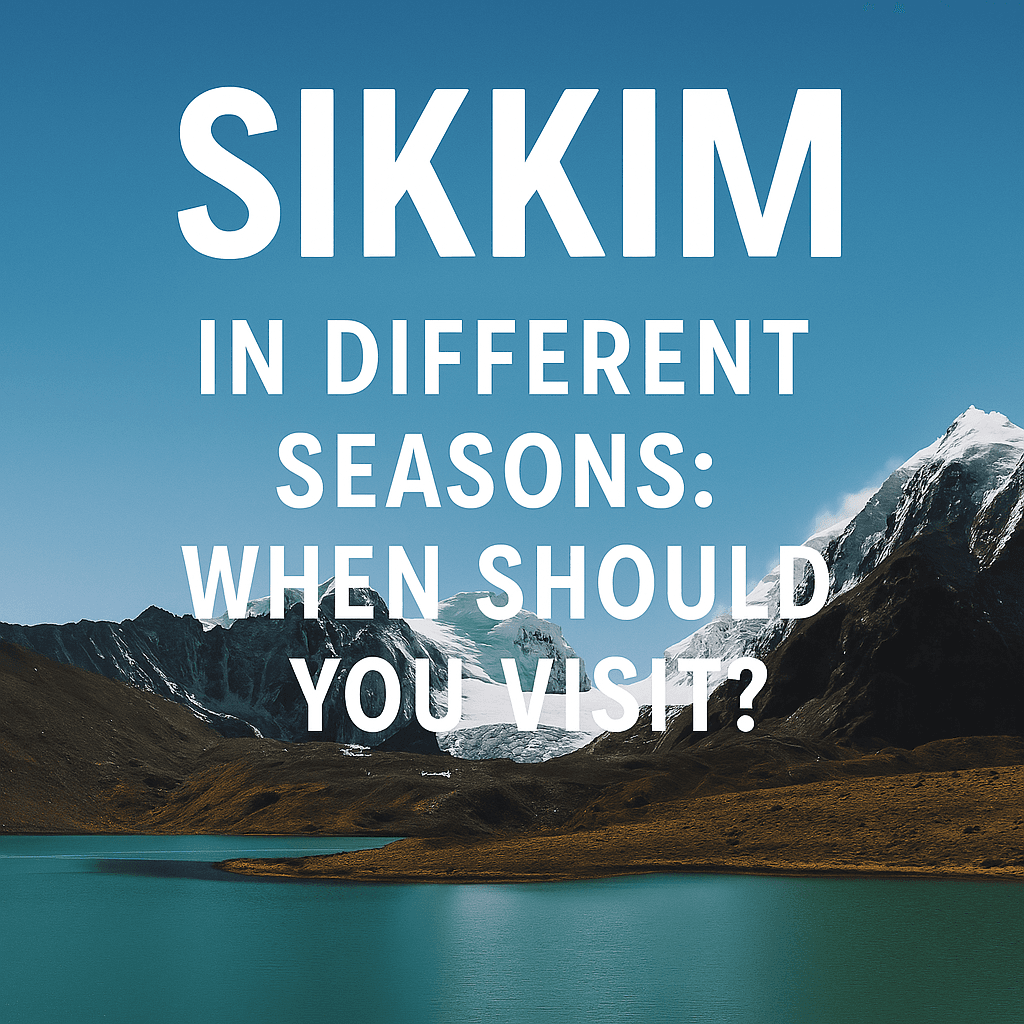
Nestled in the Eastern Himalayas, Sikkim is a land of dramatic landscapes, serene monasteries, colorful festivals, and rich biodiversity. But when is the best time to visit this enchanting destination? The truth is, Sikkim has something unique to offer in every season. Whether you are chasing snow-capped peaks, blooming flowers, or vibrant festivals, your experience will vary beautifully based on when you choose to visit. Let's dive into how Sikkim transforms with each season, helping you pick the perfect time for your journey.
Spring (March to May)
Spring in Sikkim is a riot of colors and new life.
- Blooming Beauty: Rhododendrons, orchids, and countless wildflowers carpet the valleys and hillsides.
- Mild Weather: Temperatures range between 5°C to 20°C, making it ideal for sightseeing and outdoor activities.
- Best for Trekking: Trails like Goechala and Dzongri are at their best, offering clear skies and panoramic views.
- Festivals: Witness the vibrant celebrations of Losar (Tibetan New Year) and Saga Dawa.
Ideal for: Nature lovers, trekkers, and photographers.
Pro Tip: Visit Yumthang Valley during April to experience the “Valley of Flowers” in full bloom.
Summer (June to August)
Summer in Sikkim brings pleasant weather to the higher altitudes.
- Cool Retreat: Escape the scorching heat of the plains with temperatures between 10°C and 25°C.
- Lush Green Landscapes: Early summer sees vibrant greenery before the heavier monsoons set in.
- Beginning of Monsoon: By mid-June, expect occasional rain showers that make the scenery more mystical.
- Lower Crowds: Fewer tourists, leading to a more peaceful experience.
Ideal for: Peace seekers, budget travelers, and those looking for a quiet getaway.
Note: Landslides can occur during heavy rains; always check weather conditions before planning.
Monsoon (July to September)
Monsoon in Sikkim paints the region in fifty shades of green.
- Romantic Vibes: The misty mountains and flowing rivers create a dreamy landscape.
- Fewer Tourists: Perfect for travelers who enjoy solitude and discounted hotel rates.
- Risk Factors: Road travel can be challenging due to landslides; some areas might become inaccessible.
- Festivals: Witness Pang Lhabsol, a festival honoring the guardian deity of Sikkim.
Ideal for: Romantic travelers, festival enthusiasts, and offbeat explorers.
Caution: Always keep buffer days in your plan in case of travel delays.
Autumn (October to November)
Autumn in Sikkim is arguably the best time to visit.
- Clear Skies: Enjoy crystal-clear views of Kanchenjunga and the surrounding peaks.
- Pleasant Weather: Temperatures are comfortable, ranging from 5°C to 15°C.
- Festive Atmosphere: Dussehra (Durga Puja) and Diwali celebrations add color and vibrance.
- Trekking Season: Ideal for adventure activities and sightseeing.
Ideal for: Trekkers, photographers, and festival-goers.
Pro Tip: Plan a trek or visit to Pelling or Yuksom for breathtaking mountain vistas
Winter (December to February)
Winter in Sikkim turns the state into a snowy wonderland.
- Snow Adventures: Places like Tsomgo Lake, Lachung, and Lachen are blanketed in snow.
- Chilly Weather: Temperatures can dip below freezing in higher altitudes.
- Cozy Experiences: Enjoy hot butter tea, cozy homestays, and frozen lakes.
- Festivals: Christmas and New Year are celebrated with warmth and joy.
Ideal for: Snow lovers, adventure seekers, and those looking for a white winter.
Note: Some high-altitude areas may close due to heavy snowfall; plan accordingly.
When Should You Visit Sikkim?
- For Flower Lovers & Trekkers: March to May (Spring)
- For Peaceful Vacations: June to August (Early Summer/Monsoon)
- For Adventure & Clear Views: October to November (Autumn)
- For Snow Experiences: December to February (Winter)
No matter when you choose to visit, Sikkim will welcome you with open arms and unforgettable memories. Just pack according to the season and be ready to experience magic at every turn!
Ready to explore Sikkim's magic in your favorite season? Book your journey today and let the Himalayas weave their spell around you! see packages